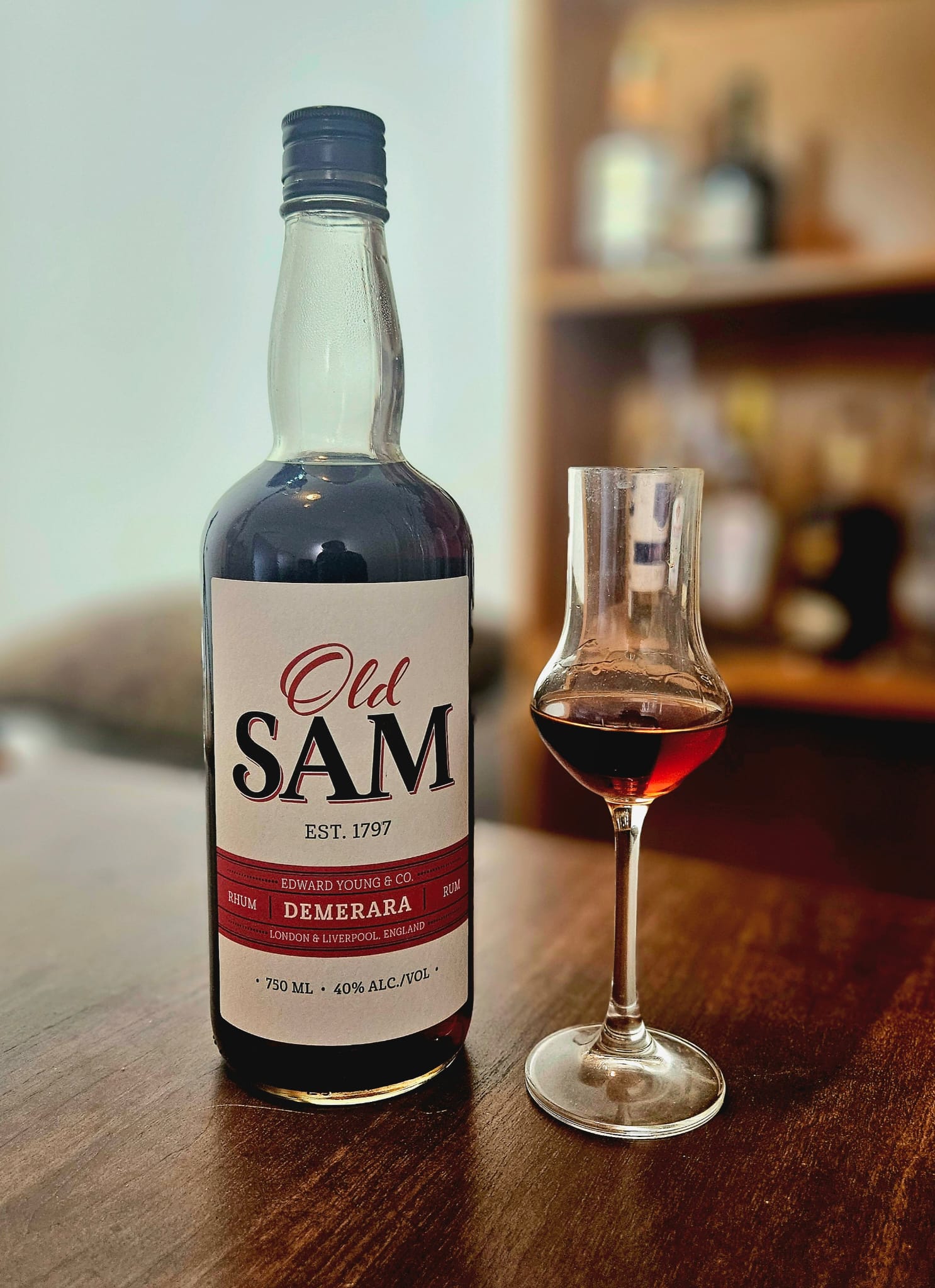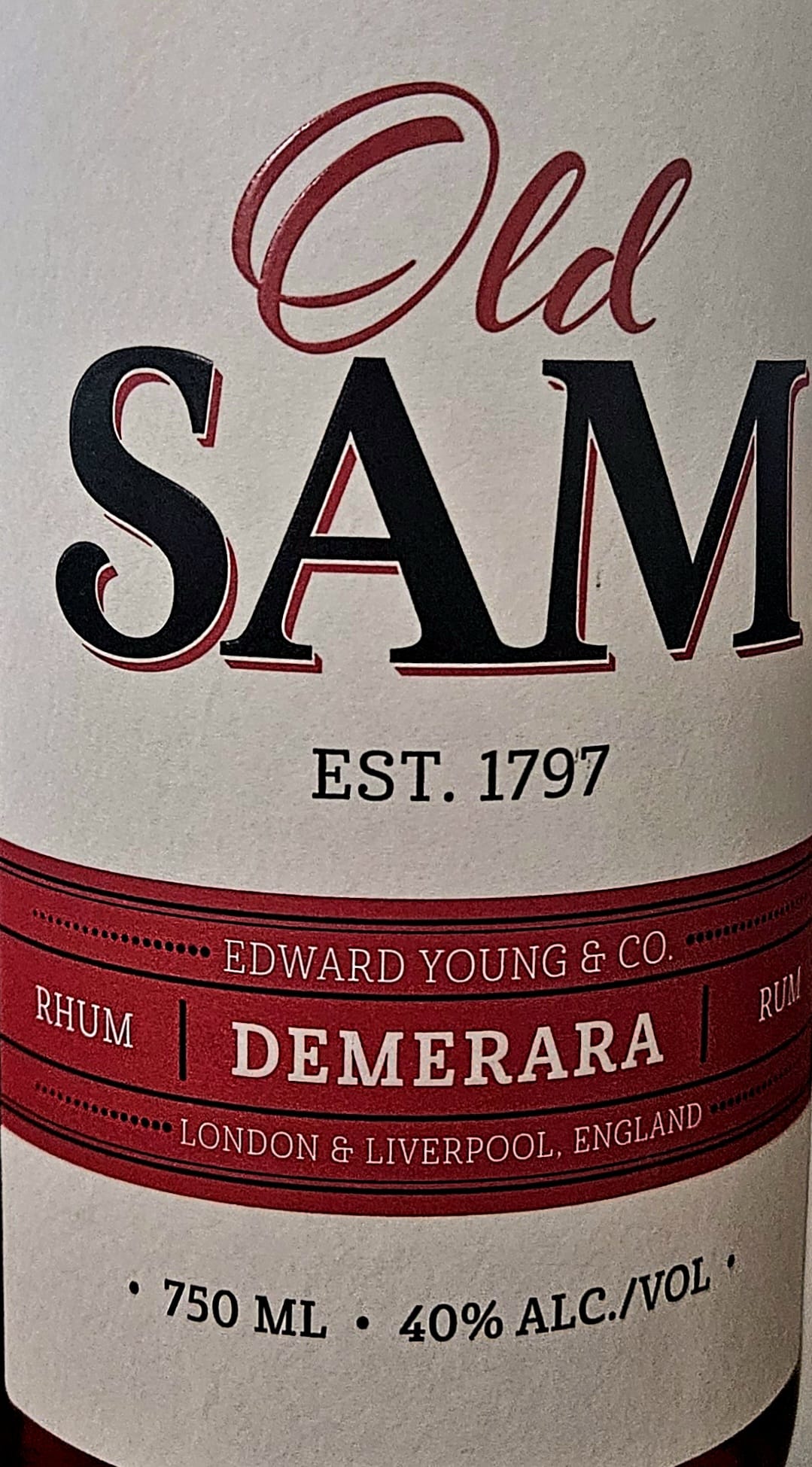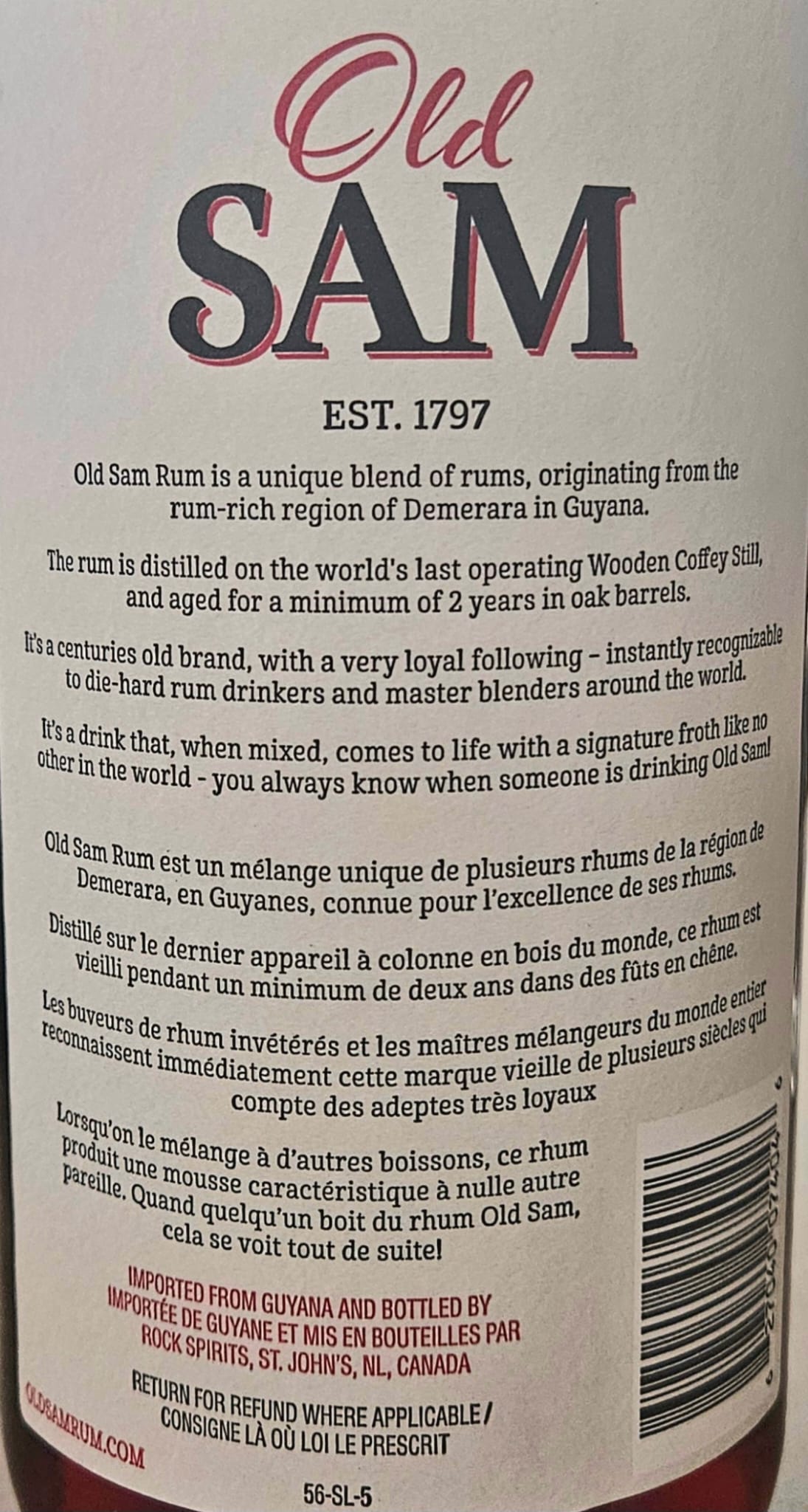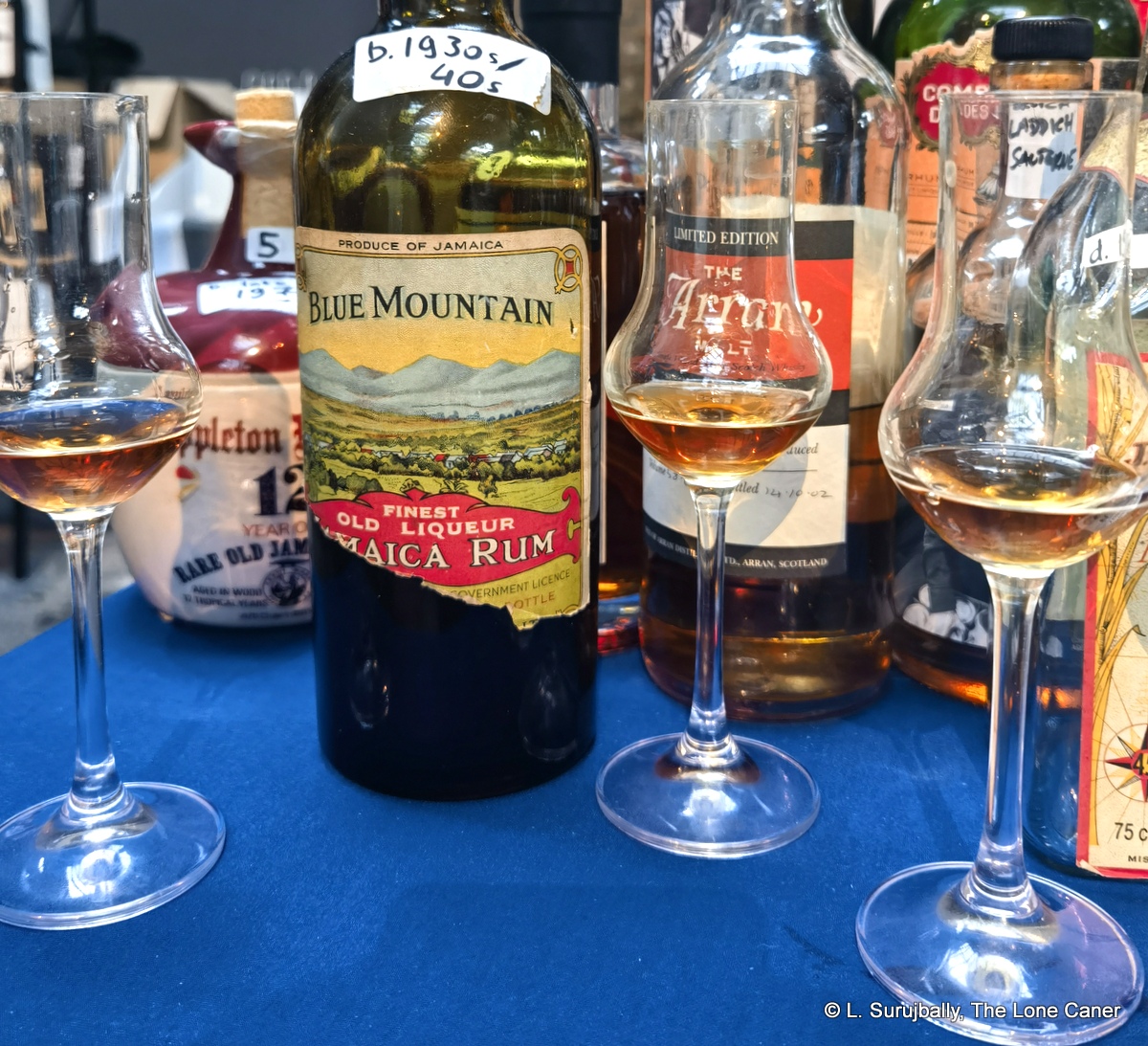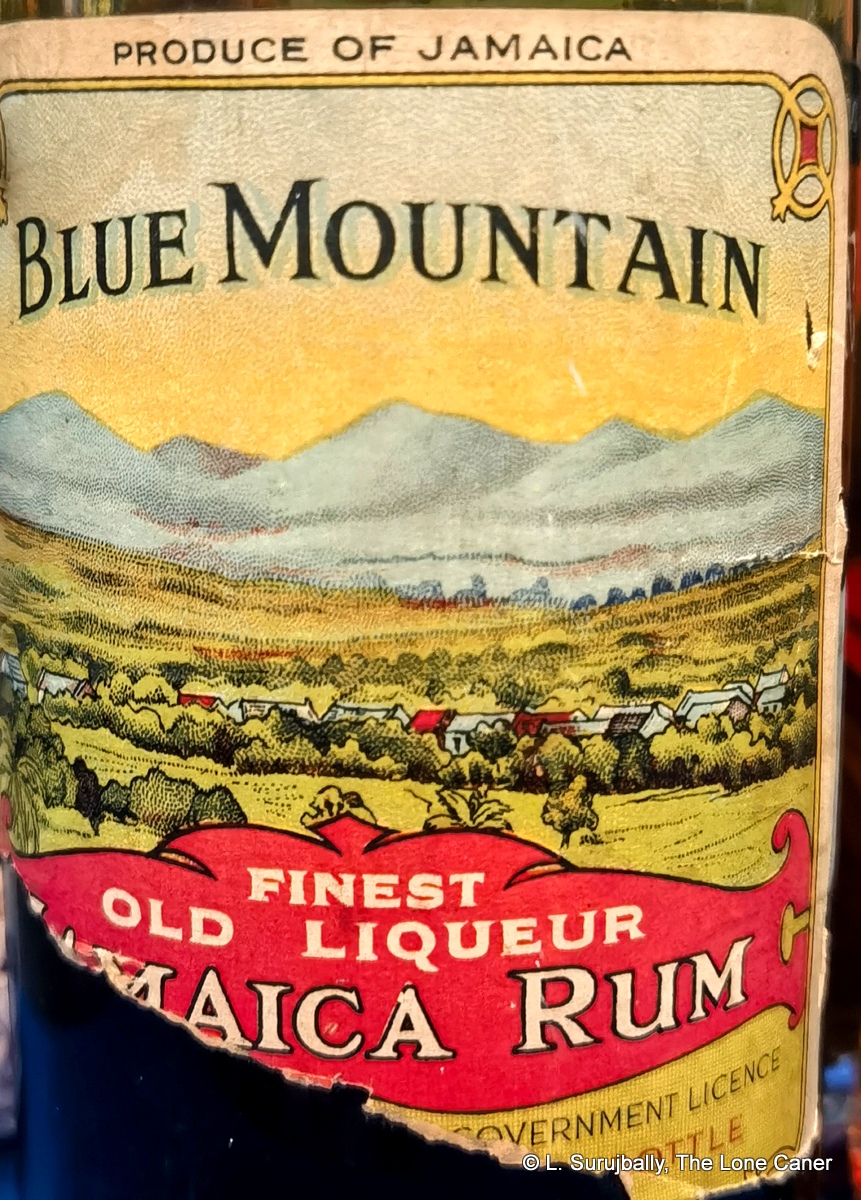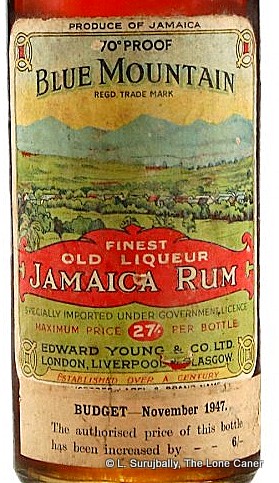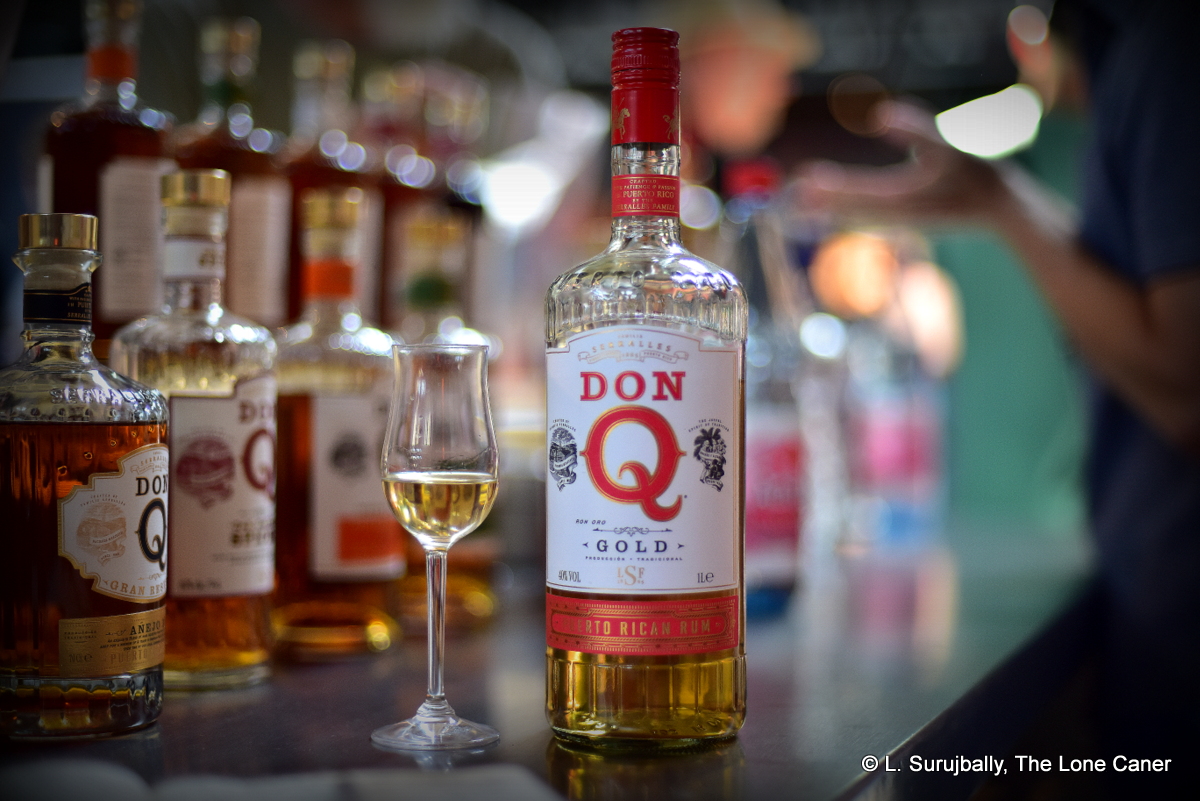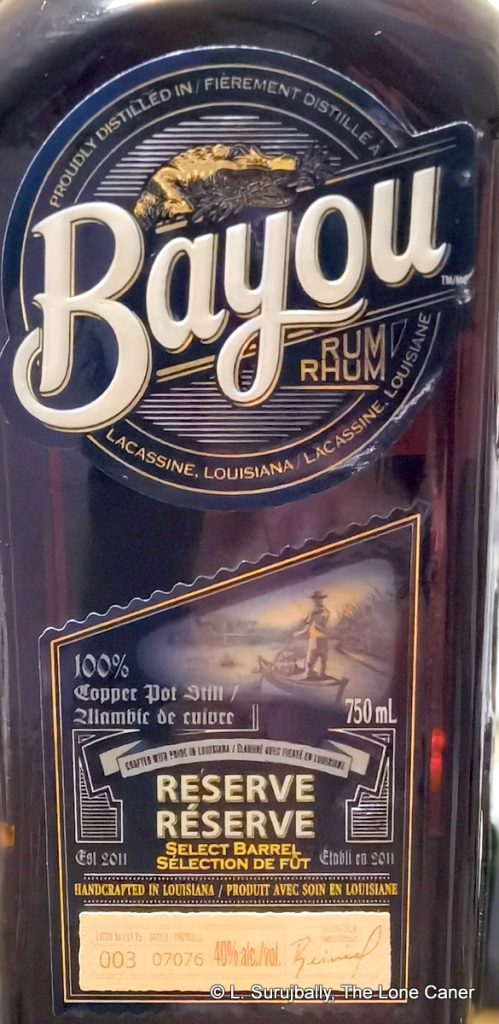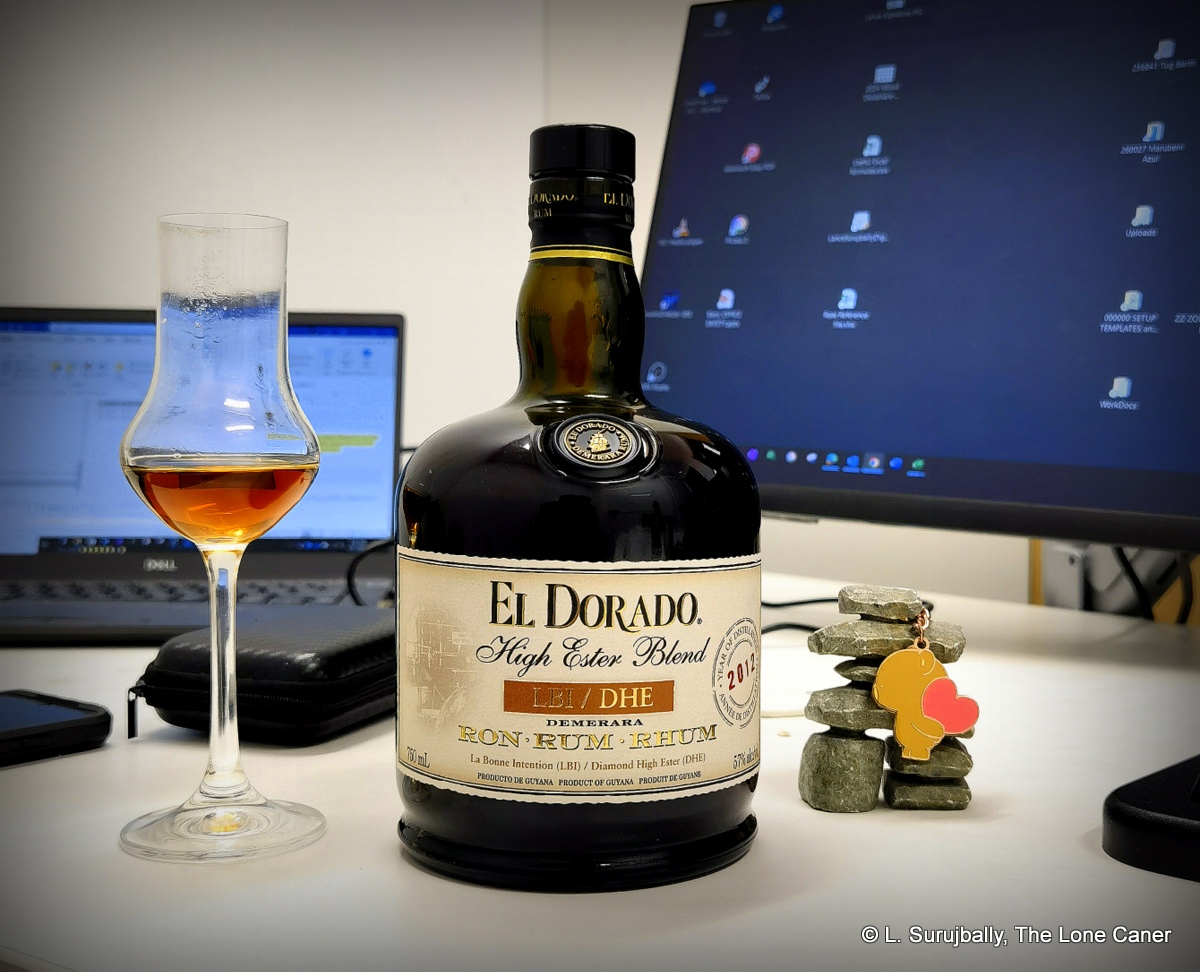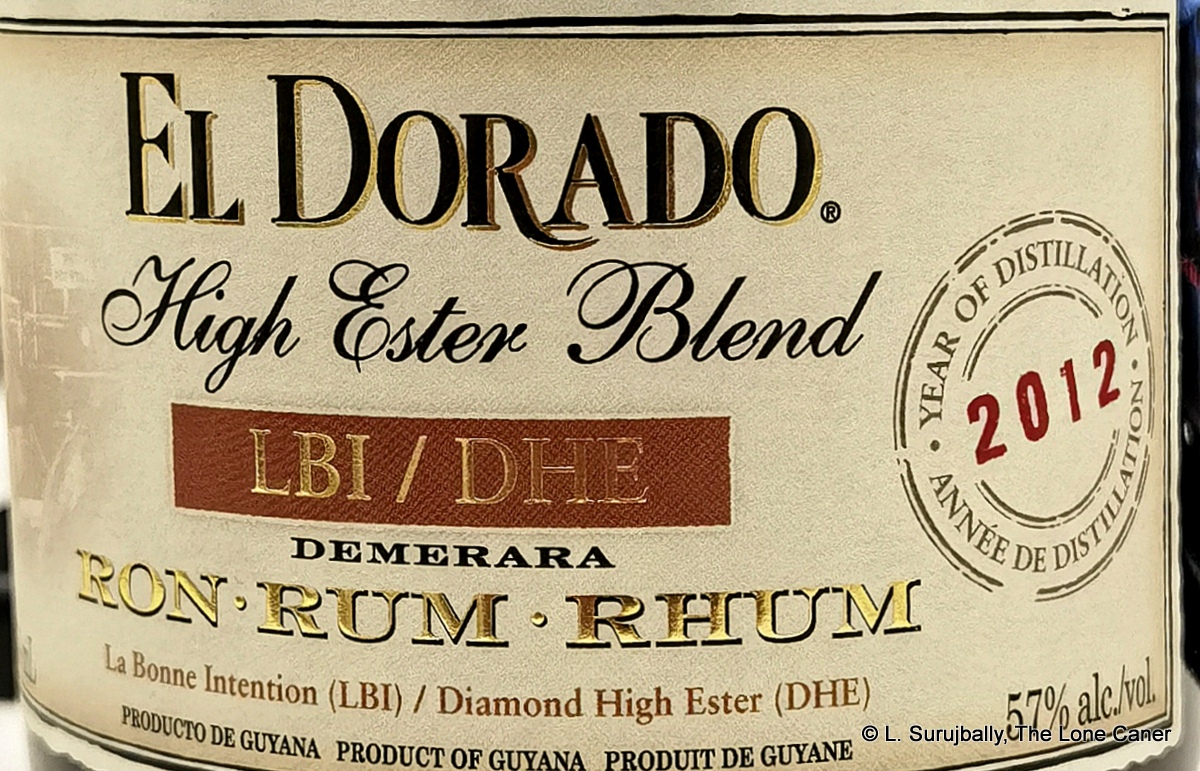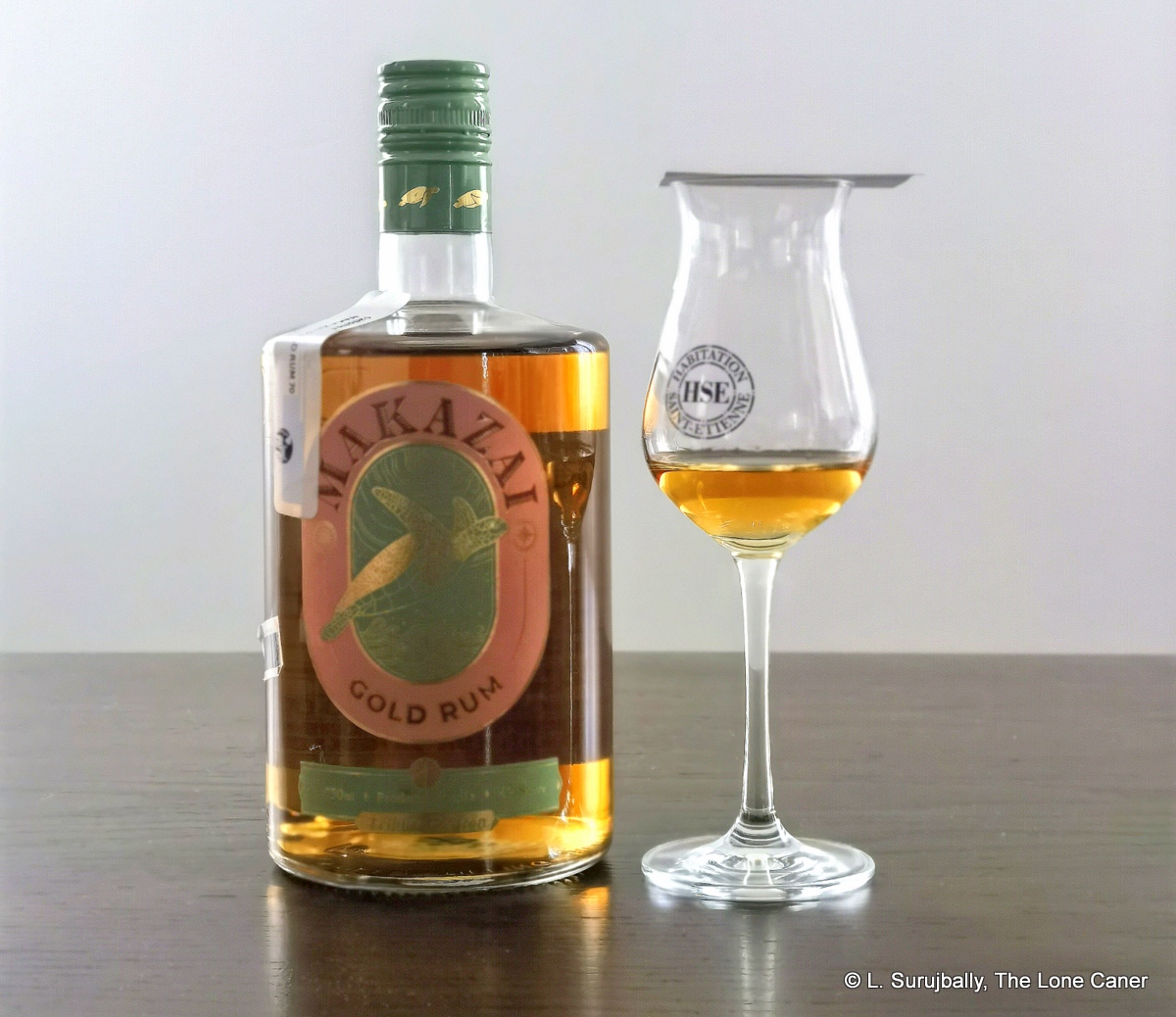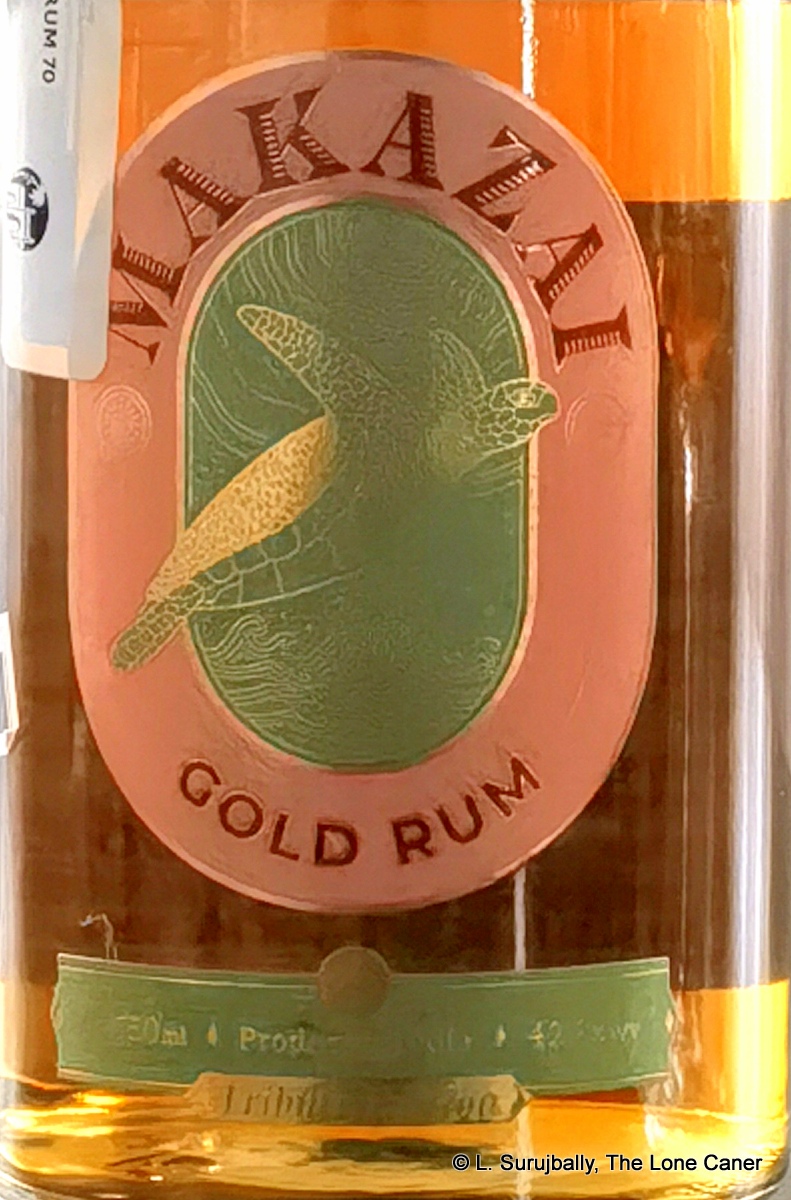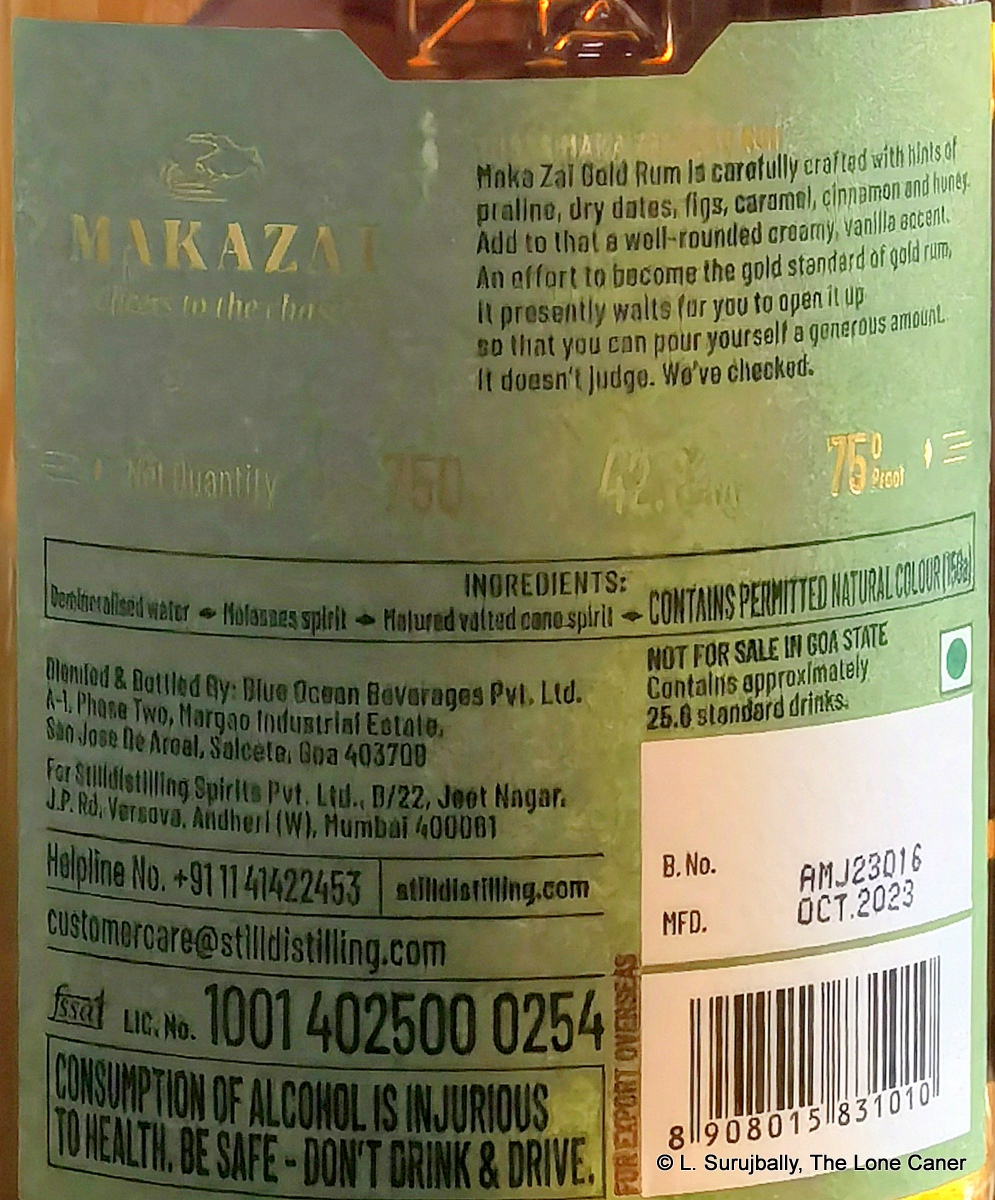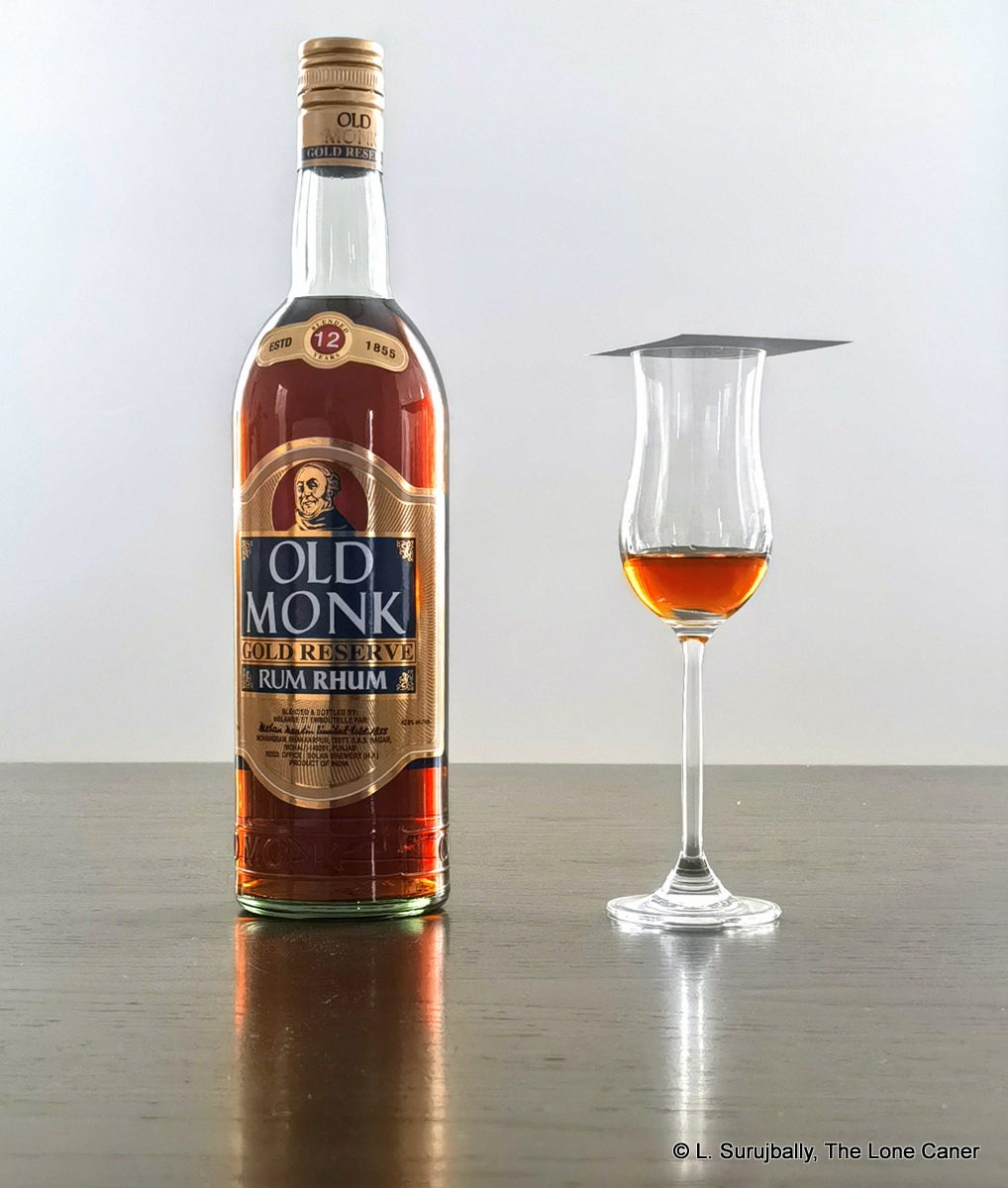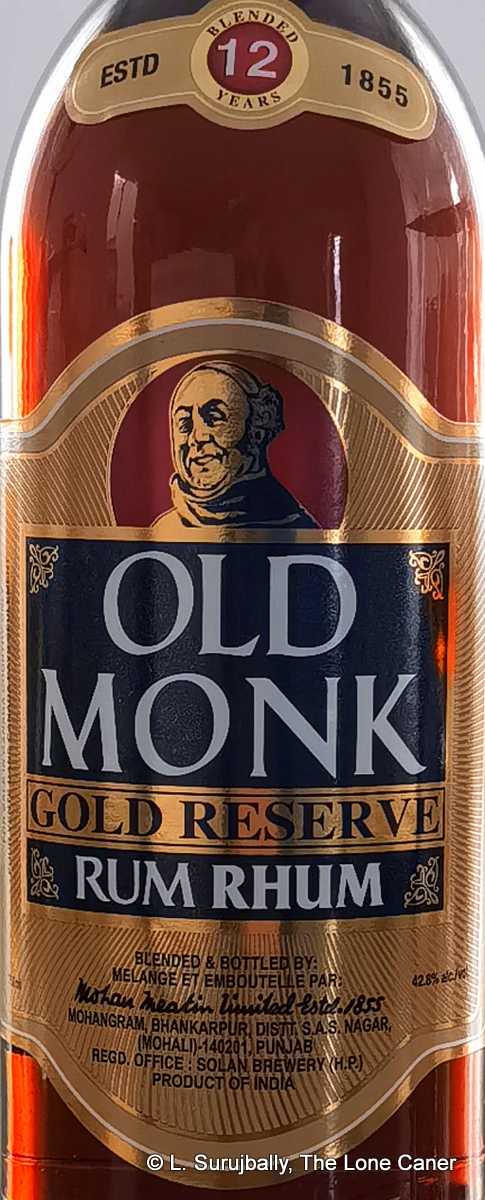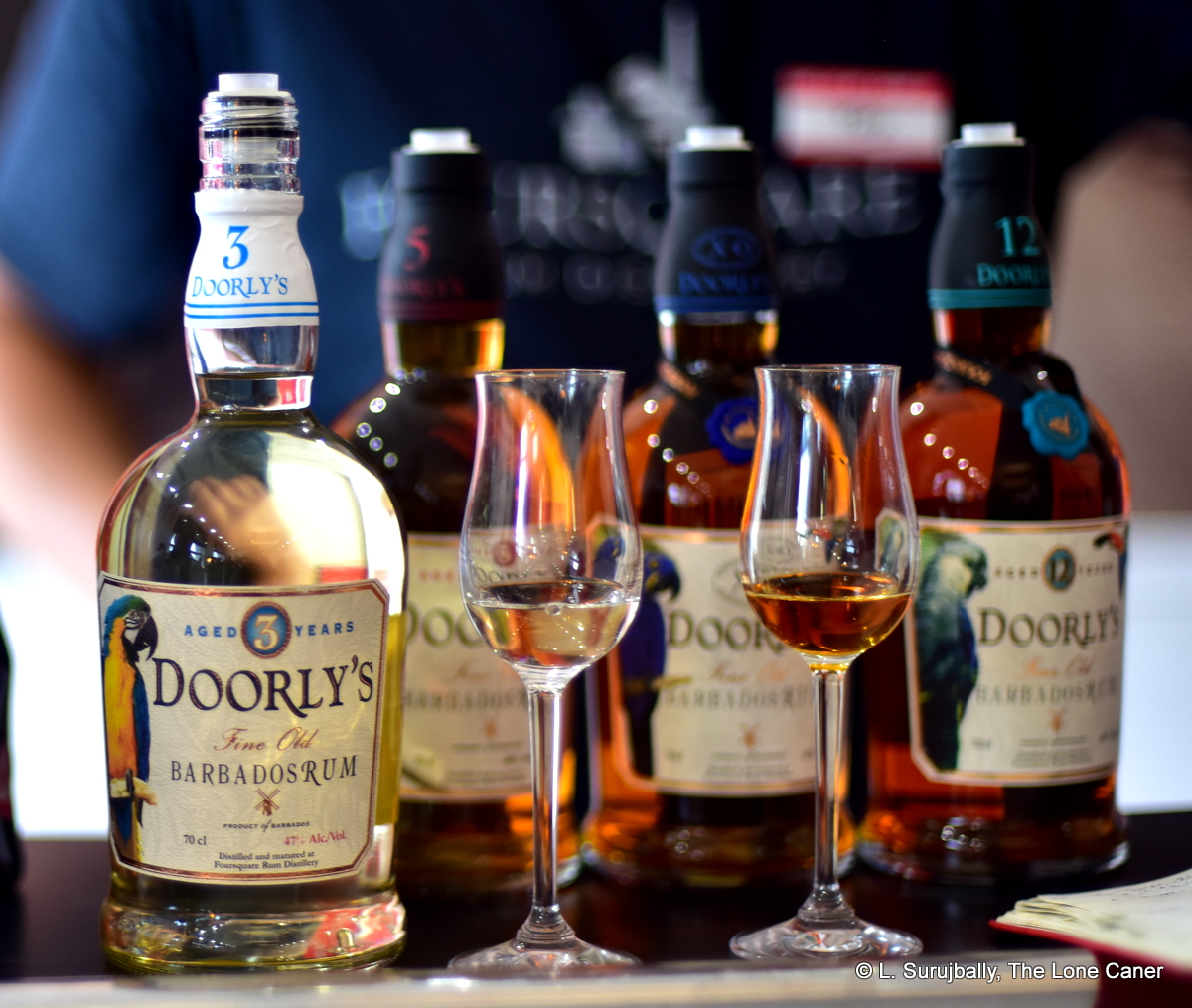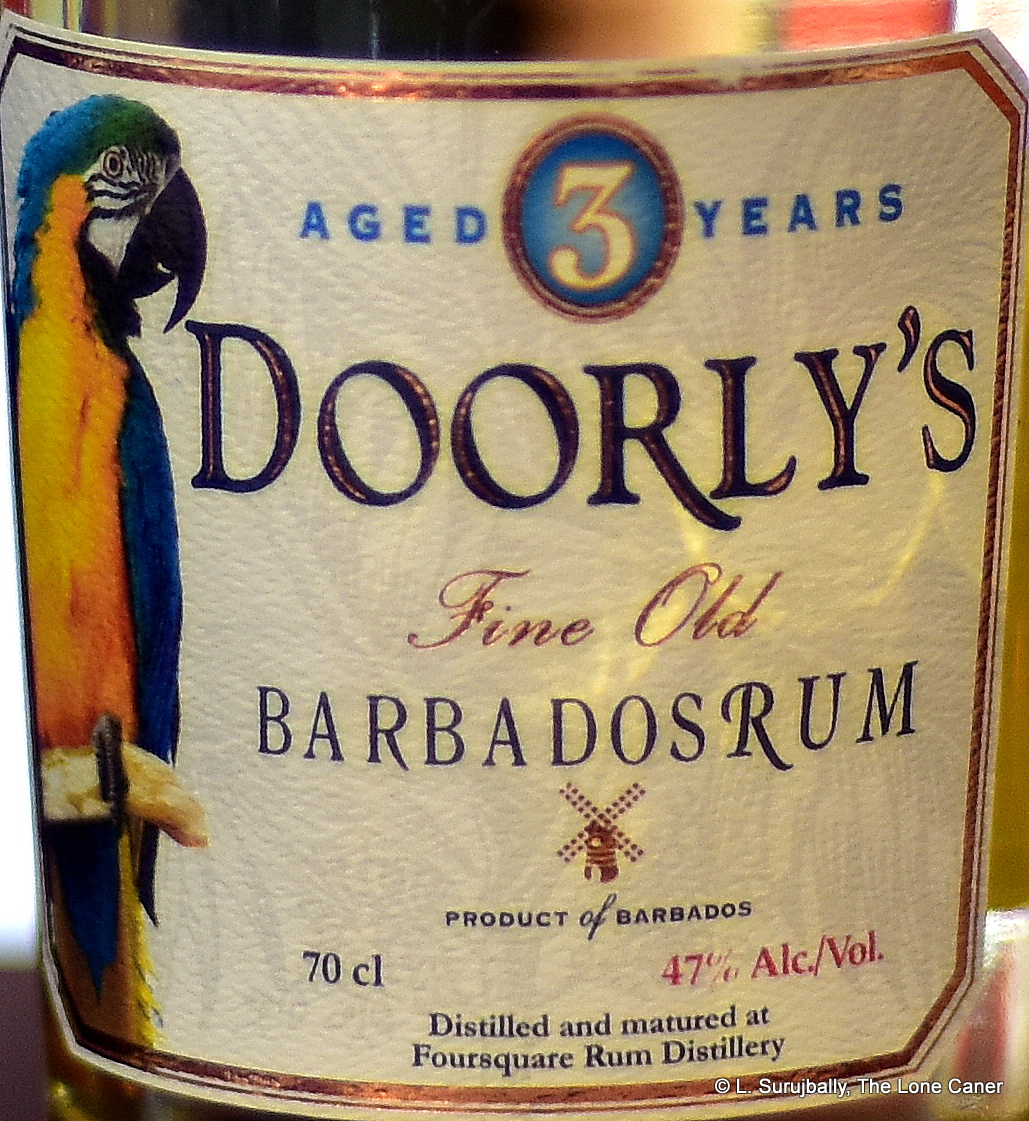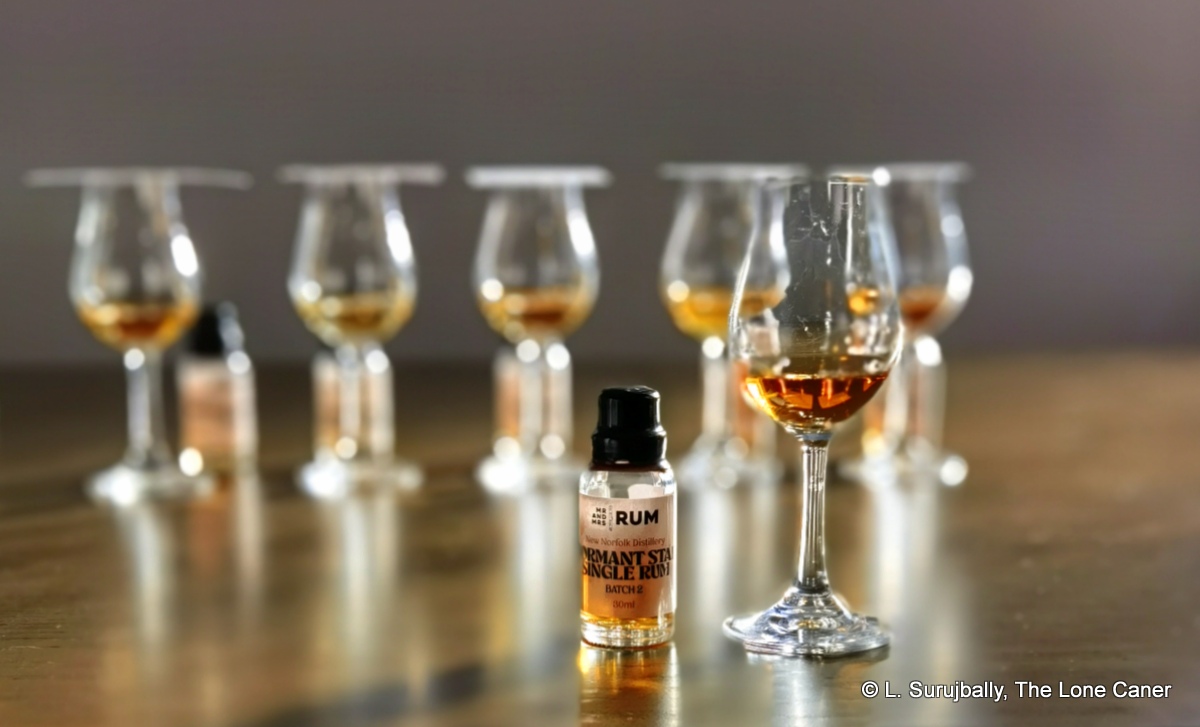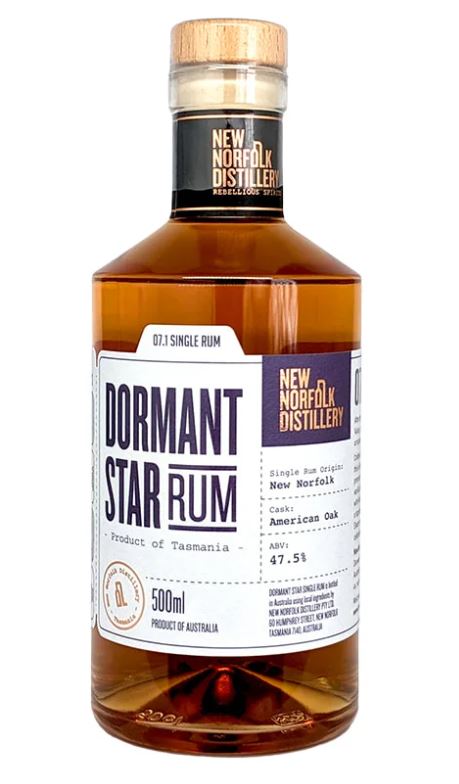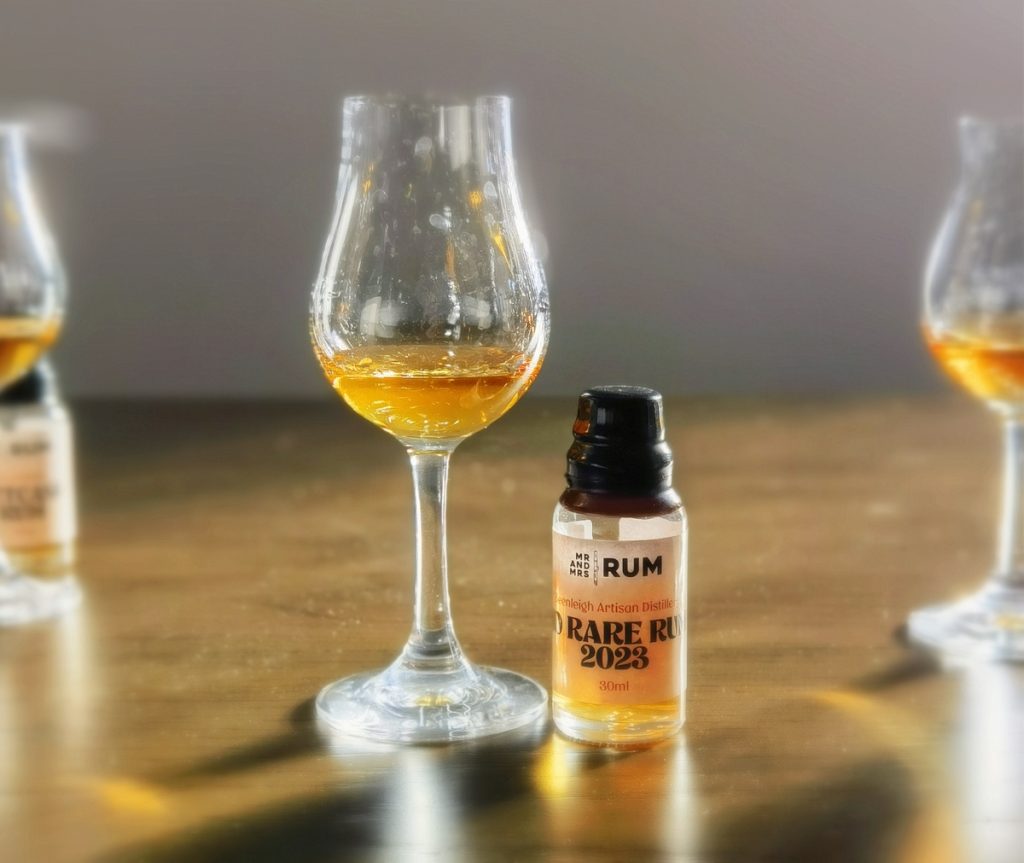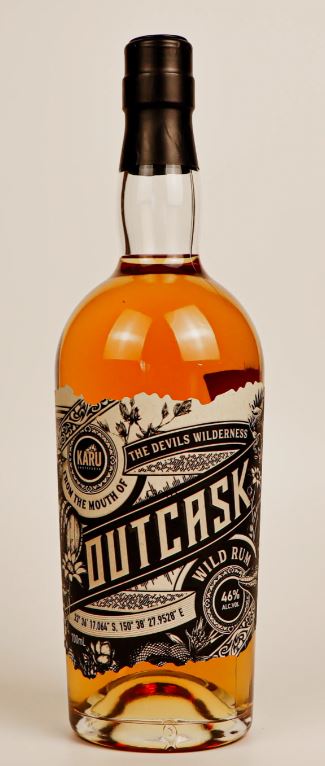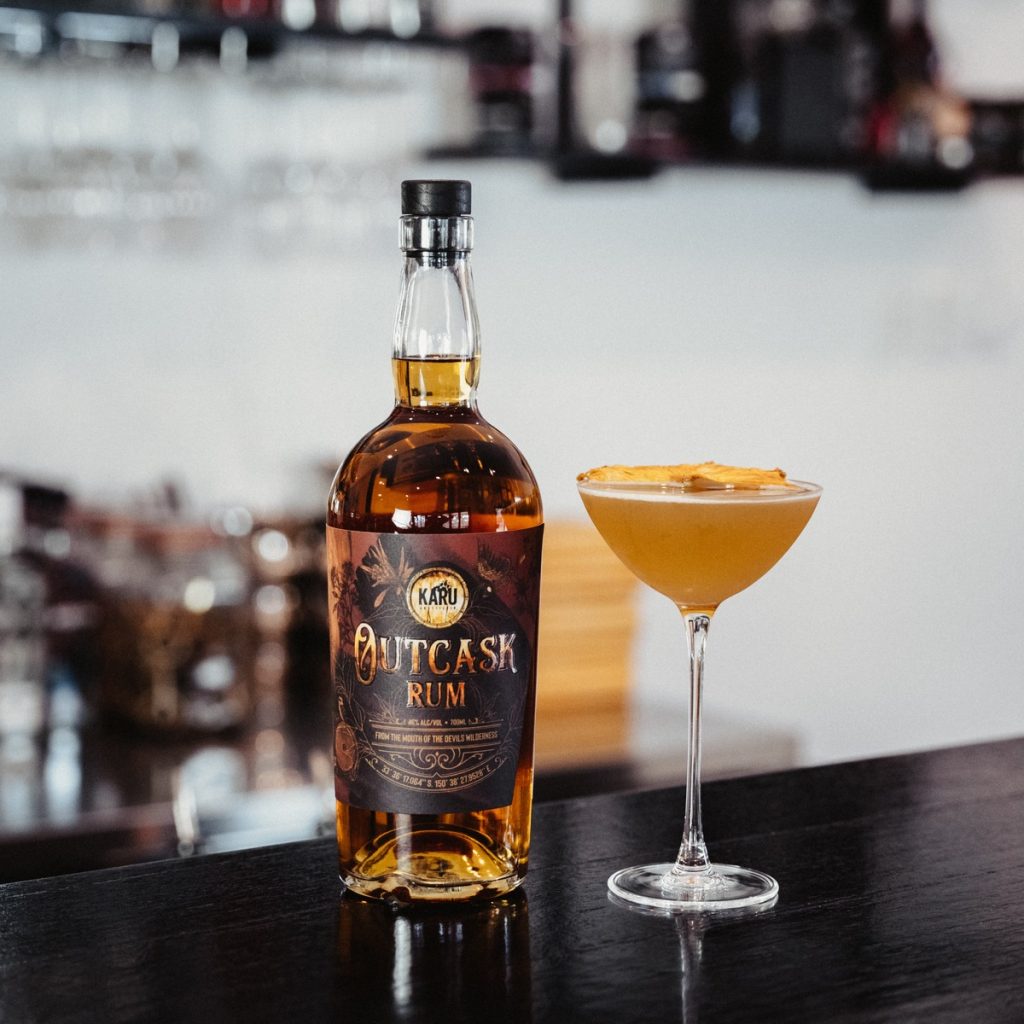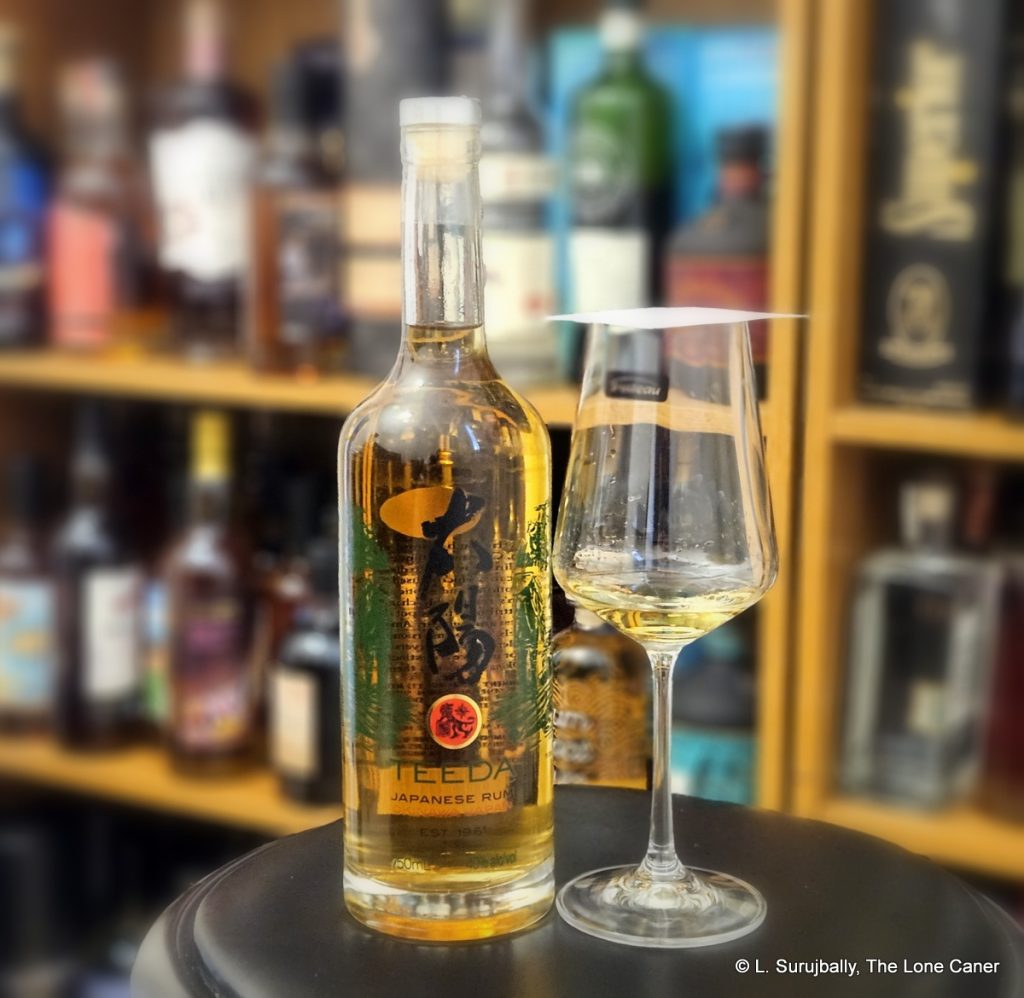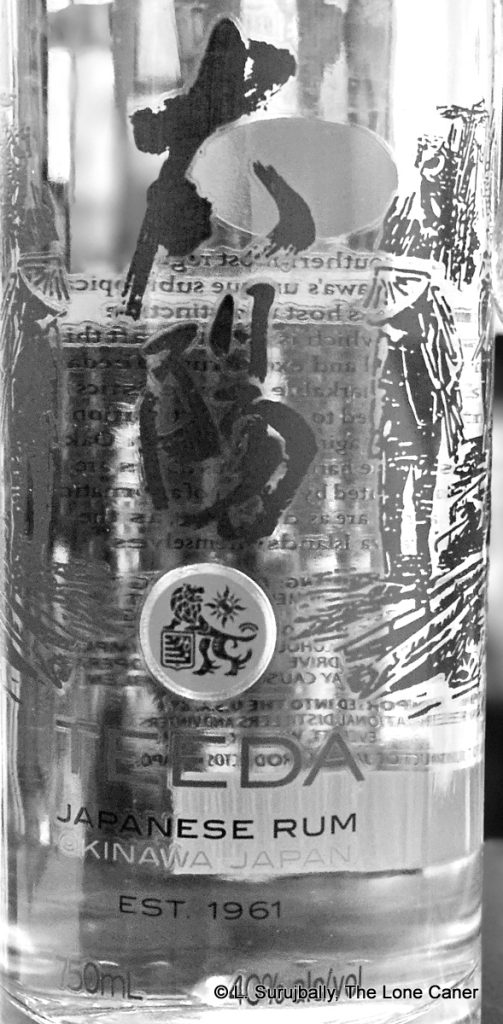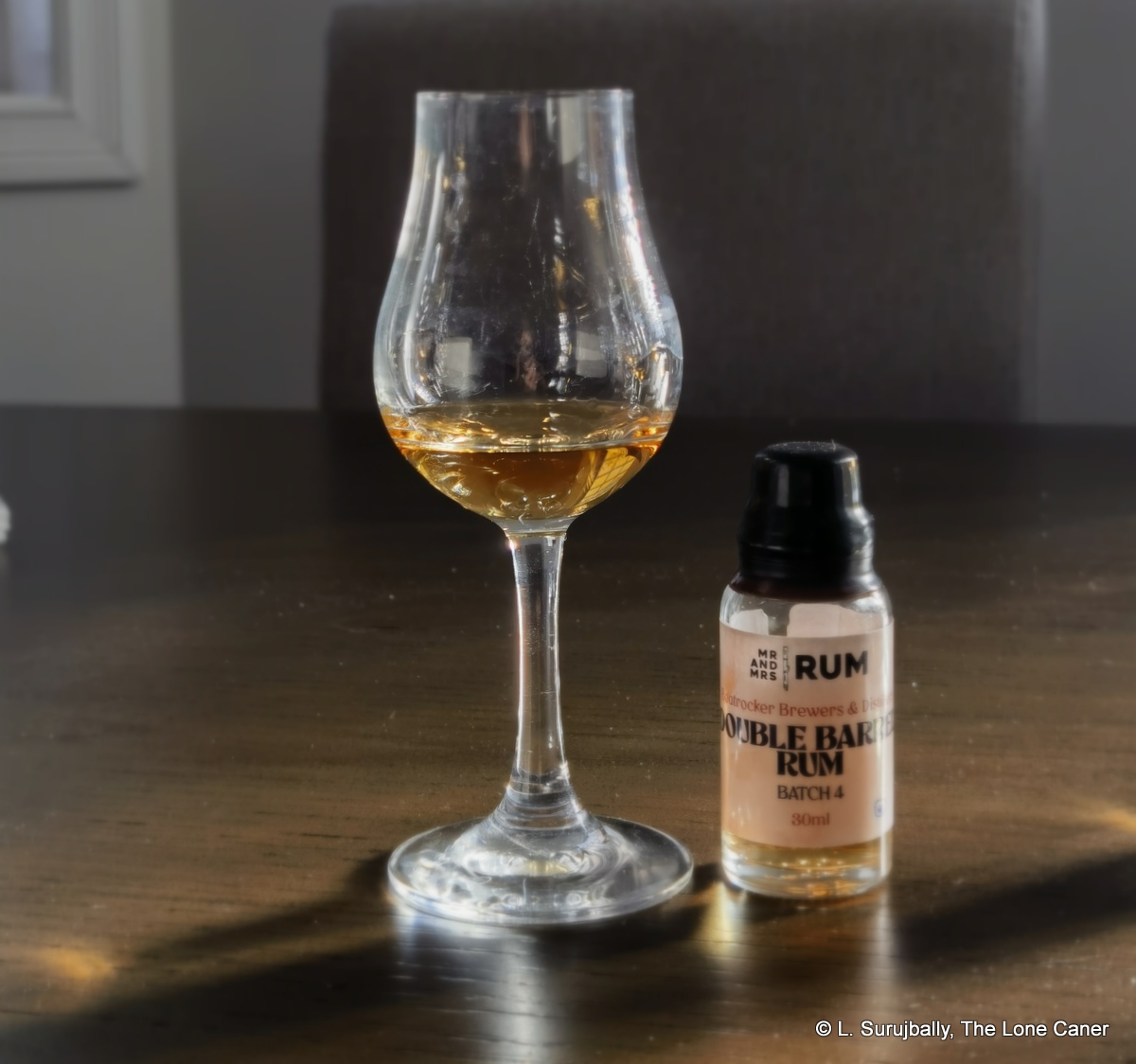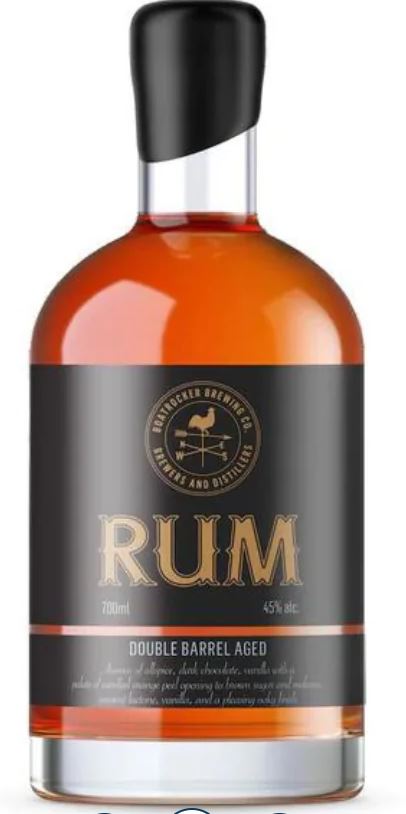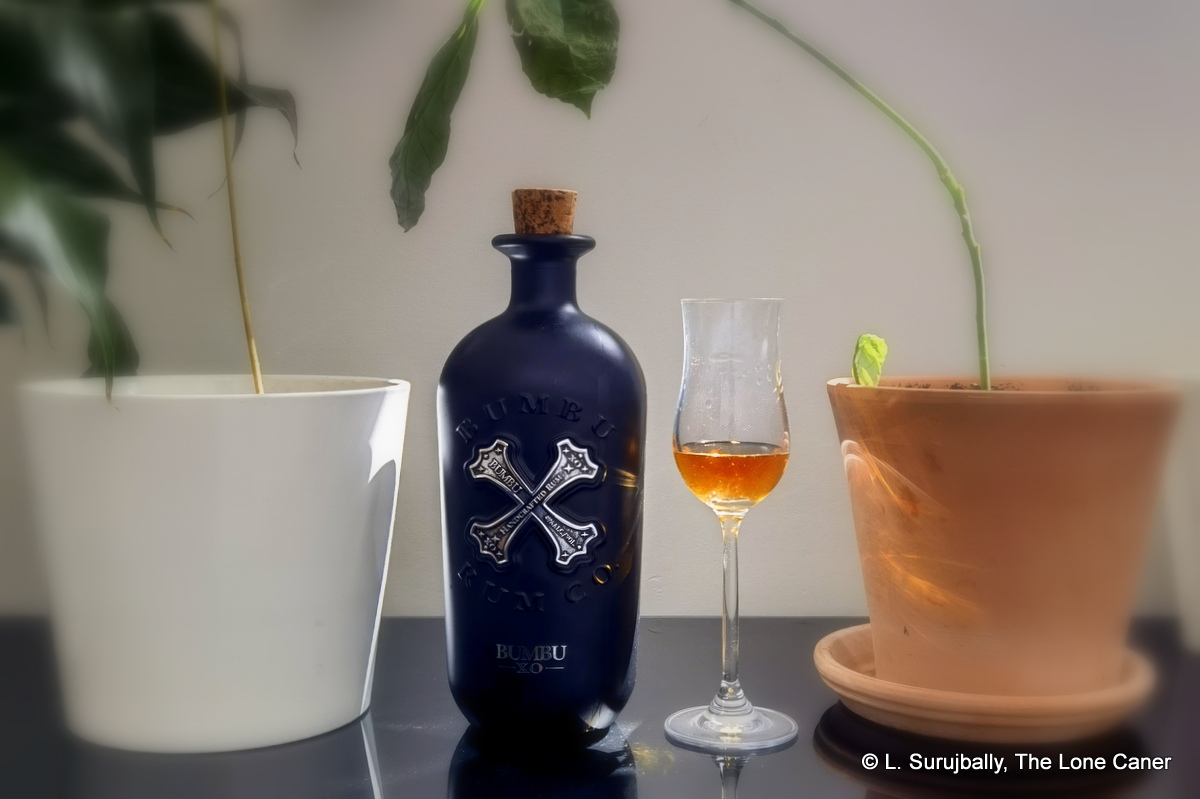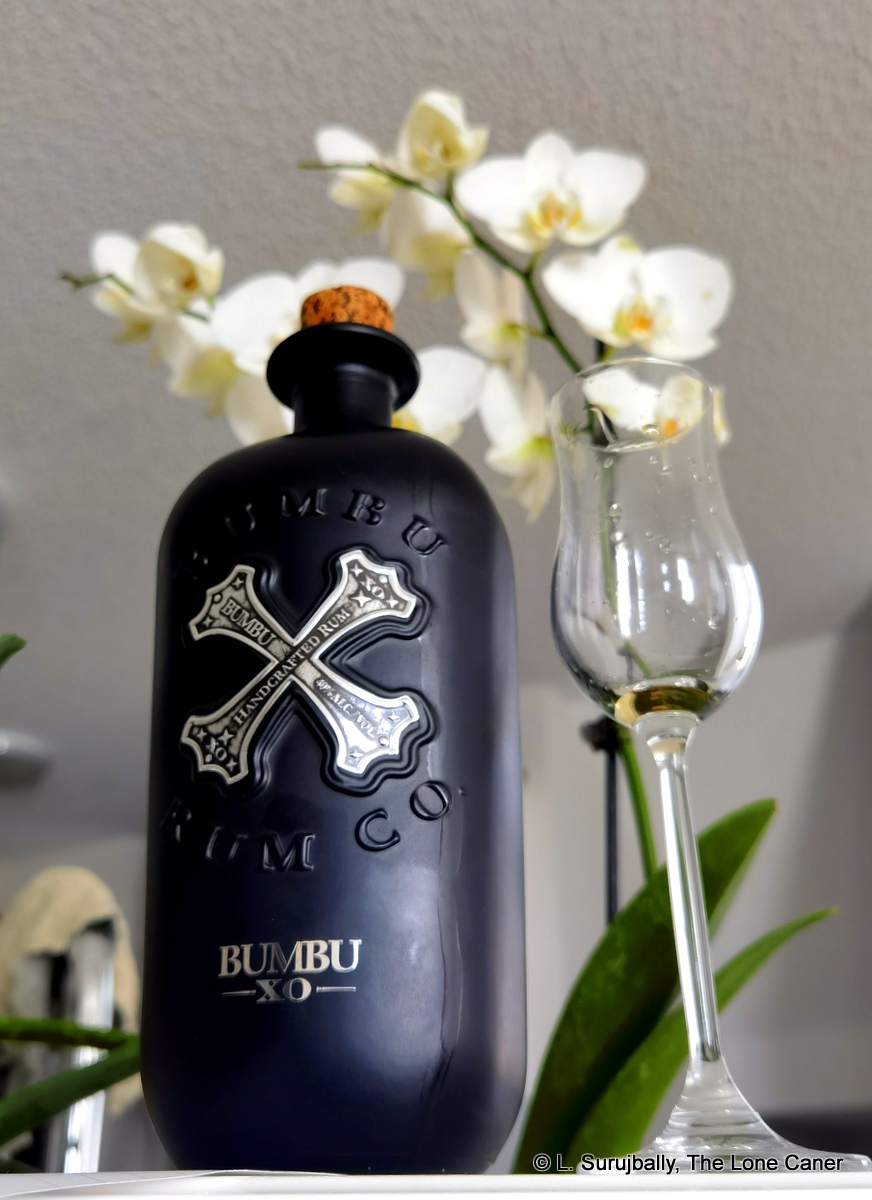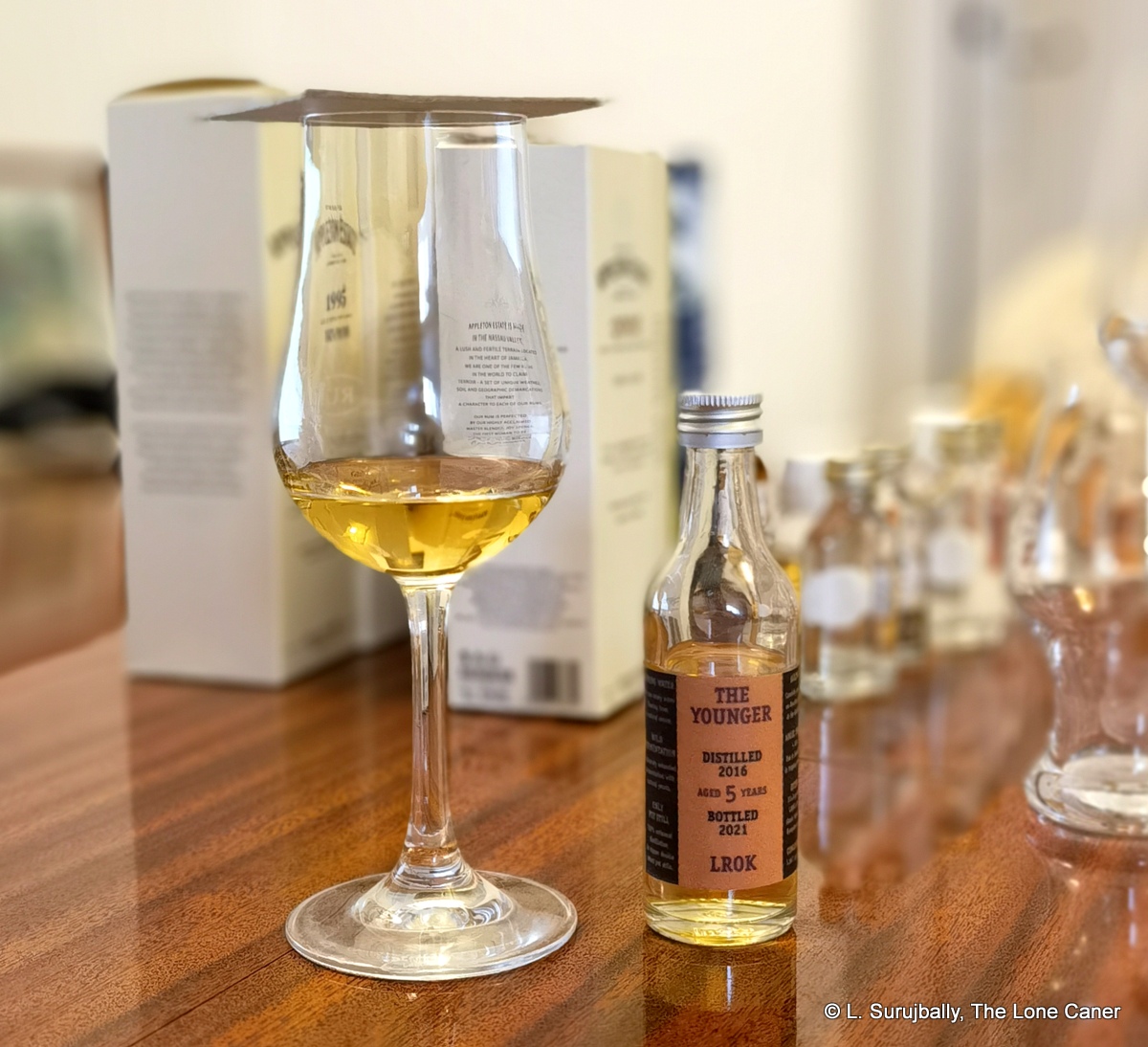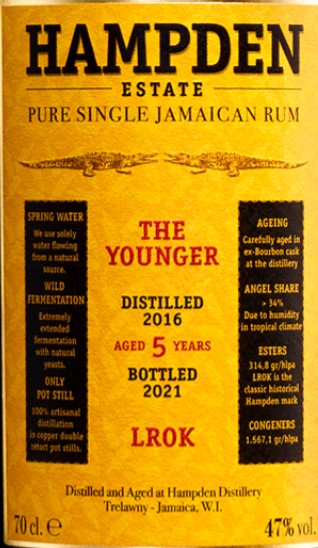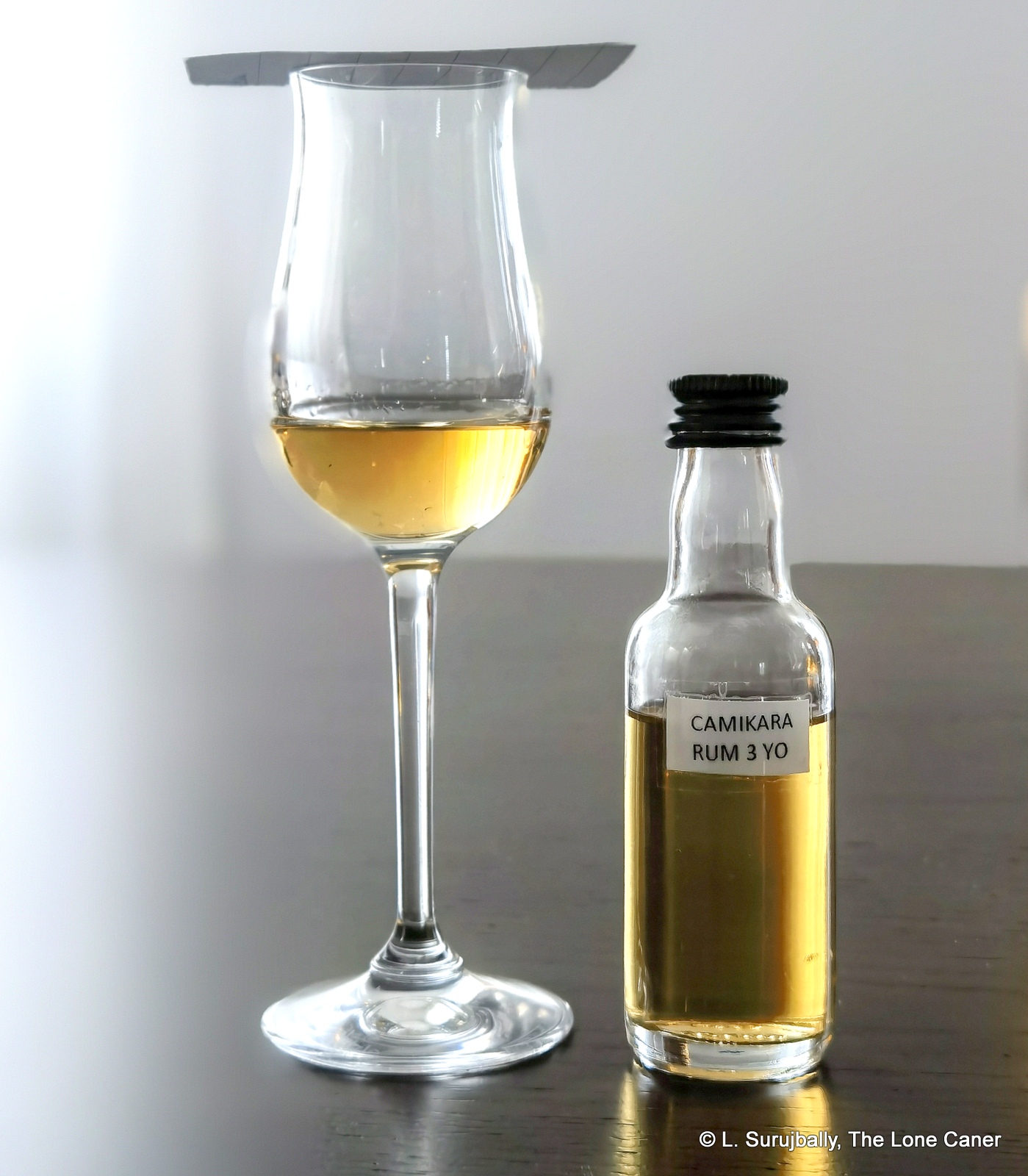 Today I’ll dispense with the third rum in the Camikara line of rums from the Indian company of Piccadily Distillers (their true name is Piccadily Agro Industries Ltd), who also make the very good 12YO, and a rather more middling 8YO that I was less than enthusiastic about. These are all rums that are of relatively recent conception, with the line first introduced in December 2022 (in a splashy extravaganza at the Hyatt Regency in Haryana that gave the Tasting of the Century Hampden launch in 2018 a run for its money), utilizing stocks that had been laid down for the company’s blended rums.
Today I’ll dispense with the third rum in the Camikara line of rums from the Indian company of Piccadily Distillers (their true name is Piccadily Agro Industries Ltd), who also make the very good 12YO, and a rather more middling 8YO that I was less than enthusiastic about. These are all rums that are of relatively recent conception, with the line first introduced in December 2022 (in a splashy extravaganza at the Hyatt Regency in Haryana that gave the Tasting of the Century Hampden launch in 2018 a run for its money), utilizing stocks that had been laid down for the company’s blended rums.
Camikara entered the premium rum space after seeing the potential of premium whiskies (their Indri and Whistler brands had been on the drawing board for far longer, and were launched in the early 2020s), and sought to leverage their license to make alcohol from cane juice into a rum from that source, a first in India at the time. The wash is double distilled using large pot stills in their main facility in Haryana (in the Punjab), and the final distillate aged in ex-bourbon barrels for the requisite period (the production process is covered in more detail in the 8YO review).
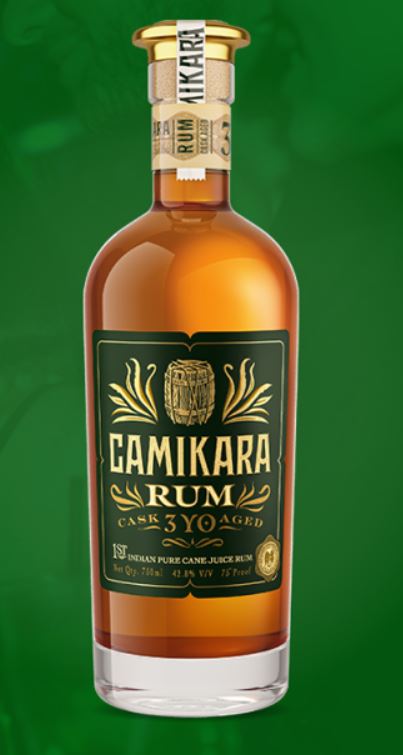 The 3YO is made the same way as the other two older rums in the portfolio, issued at 42.8%, and one expects that for a rum this young, the cane juice nature of the distillate would be quite evident, in a way that the ageing has taken out of the older bottlings which are somewhat more barrel-influenced. Certainly the nose suggests this, because it is quite pungent at first nosing – very tawny, and almost sharp to smell. It noses of sweet grain cereals (think honey nut Cheerios), honey, brine, and is quite astringent, almost sharp. There’s also some of the youth evident here – turpentine, fresh paint, both fortunately mild. Yet at the same time it feels raw and a little uncouth, with few of the herbaceous grassy notes I would expect to at least get a hint of. There are some scents of melons and papaya, cardamom and vanilla, yes — but one has to strain too hard to get any of that
The 3YO is made the same way as the other two older rums in the portfolio, issued at 42.8%, and one expects that for a rum this young, the cane juice nature of the distillate would be quite evident, in a way that the ageing has taken out of the older bottlings which are somewhat more barrel-influenced. Certainly the nose suggests this, because it is quite pungent at first nosing – very tawny, and almost sharp to smell. It noses of sweet grain cereals (think honey nut Cheerios), honey, brine, and is quite astringent, almost sharp. There’s also some of the youth evident here – turpentine, fresh paint, both fortunately mild. Yet at the same time it feels raw and a little uncouth, with few of the herbaceous grassy notes I would expect to at least get a hint of. There are some scents of melons and papaya, cardamom and vanilla, yes — but one has to strain too hard to get any of that
And if the nose was indeterminate, the palate is a disappointment through and through, and goes downhill from there. Thin and flat is the best I can express it, with a scratchy mouthfeel. The tastes are there if one really concentrates, but even the 8YO’s profile exceeds it — and that was no great shakes as you may recall. Some cumin, rice pudding, vanilla, cardamom and brown sugar, a touch of leather and smoky red paprika, but really, haven’t we seen all this before, done better? The finish does the rum no favours either, and just sort of trickles away like a Cheshire Cat’s grin, leaving noting behind but vague memories and the feeling of a target aimed at, and missed.
In fine, even for a three year old there’s just too little here to excite the senses or tickle the tonsils, and it underwhelms at best. I’m sure it was released as a mixing rum and therefore expectations should be tempered with that in mind, yet as the New Brits and Australians have shown us, young rums can be made well, and need not take the low road this one careens down.
(#1105)(75/100) ⭐⭐½
Other notes
- Video Recap is here.
- Because the rum is a consistent and ongoing blend, it lacks a year of distillation and bottling.
- Once again, my deepest appreciation to Nikkhil of WhiskyFlu for the sample.
Company Bio (from R-1104)
The company that ended up calling itself Piccadilly had its origins in 1953 when the founder , Mr. K.N. Sharma began a liquor distribution company called Kedar Nath & Sons in Doraha in the Punjab in the Nort West of India. The company expanded rapidly – it was formally registered nin 1967, by which time it had a near monopoly on all liquor contracts in the state. Further growth occurred with the establishment of a restaurant and bar (the “Picadili”) in the late 1960s, movie theatres in 1972, and a Piccadily Hotel in 1975, which led to further investments in the hospitality business in other cities in the Punjab and Himachal Pradesh in the 1970s and 1980s. In 1993 the company expanded yet again with the purchase of a sugar mill and distillery in Patiala, and a second one in Haryana a year later, making it a full fledged alcohol producer.
Although rum had been made in one form or another for centuries in India, all of it came from molasses or from jaggery – the company decided to buck the trend by getting a license to make alcohol from sugar cane juice in 2008 and by 2009 had started production of alcohol from this source. I have no records that say what their brand was at this time – maybe they just made neutral alcohol to mix into their locally sold whiskies (a common practise) In 2010, however, they commissioned a third distillery specifically to make premium whisky, rather than the bulk malt they had been making up to this point for supply to other liquor manufacturers all over the country. This new distillery opened in 2012, which, more than a decade later, has made Piccadily the largest independent malt manufacturer and seller of malt spirits in India, producing three brands and four million liters annually. Today, as well as across India, it sells to Europe and the United States, and has invested in a project in Scotland, where it also intends to build a distillery.
The 2020s was where it all finally came together, with the Whistler and Indi brands launching in 2020 and 2021 respectively, and Camikara being introduced in 2022, all with an international focus. The Camikara trio have won several medals in spirits competitions like the ISWC and Rum and Cachaca Masters since then, most recently 2024.
The family has also become a very powerful one, with the second generation involved in commercial and political activities (not always positively) – however, since this is outside the scope of the review, I will pass on it for now.


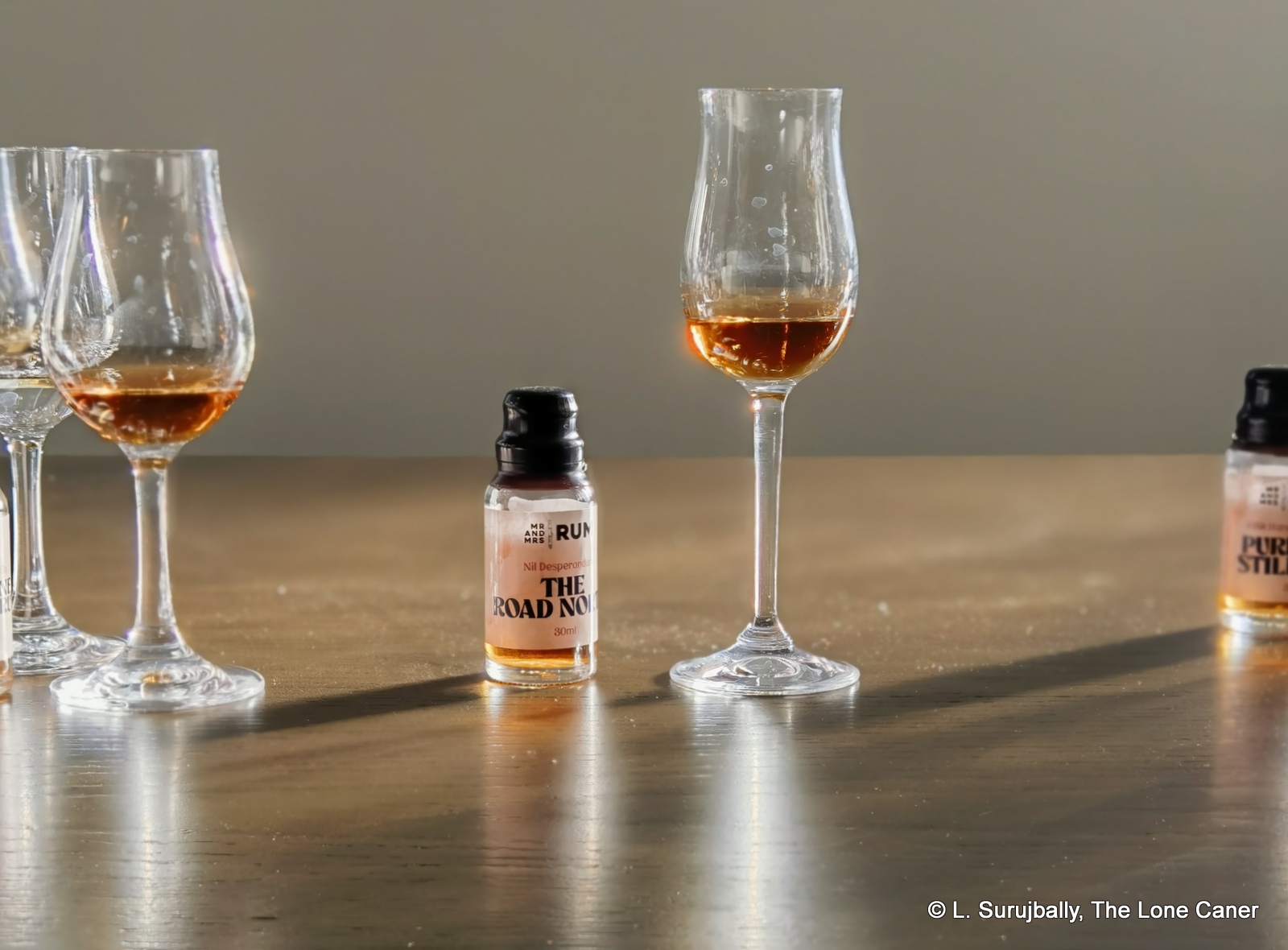
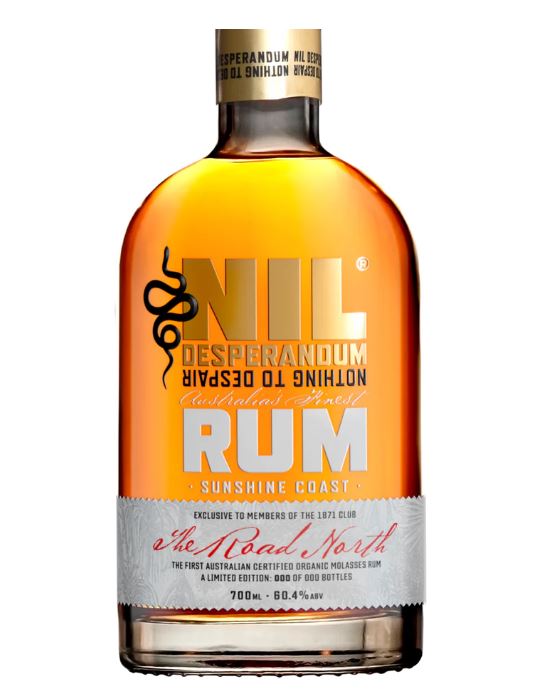



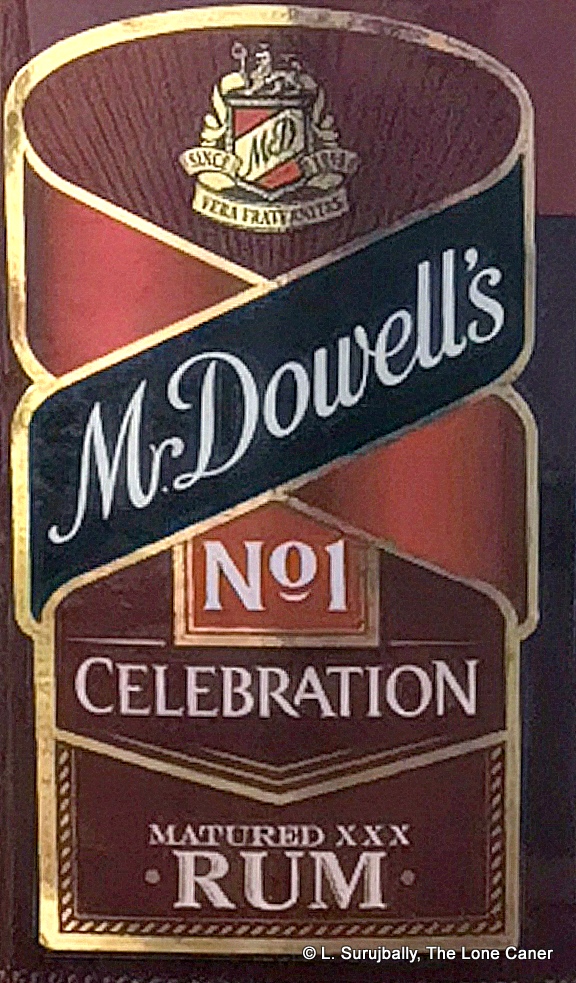
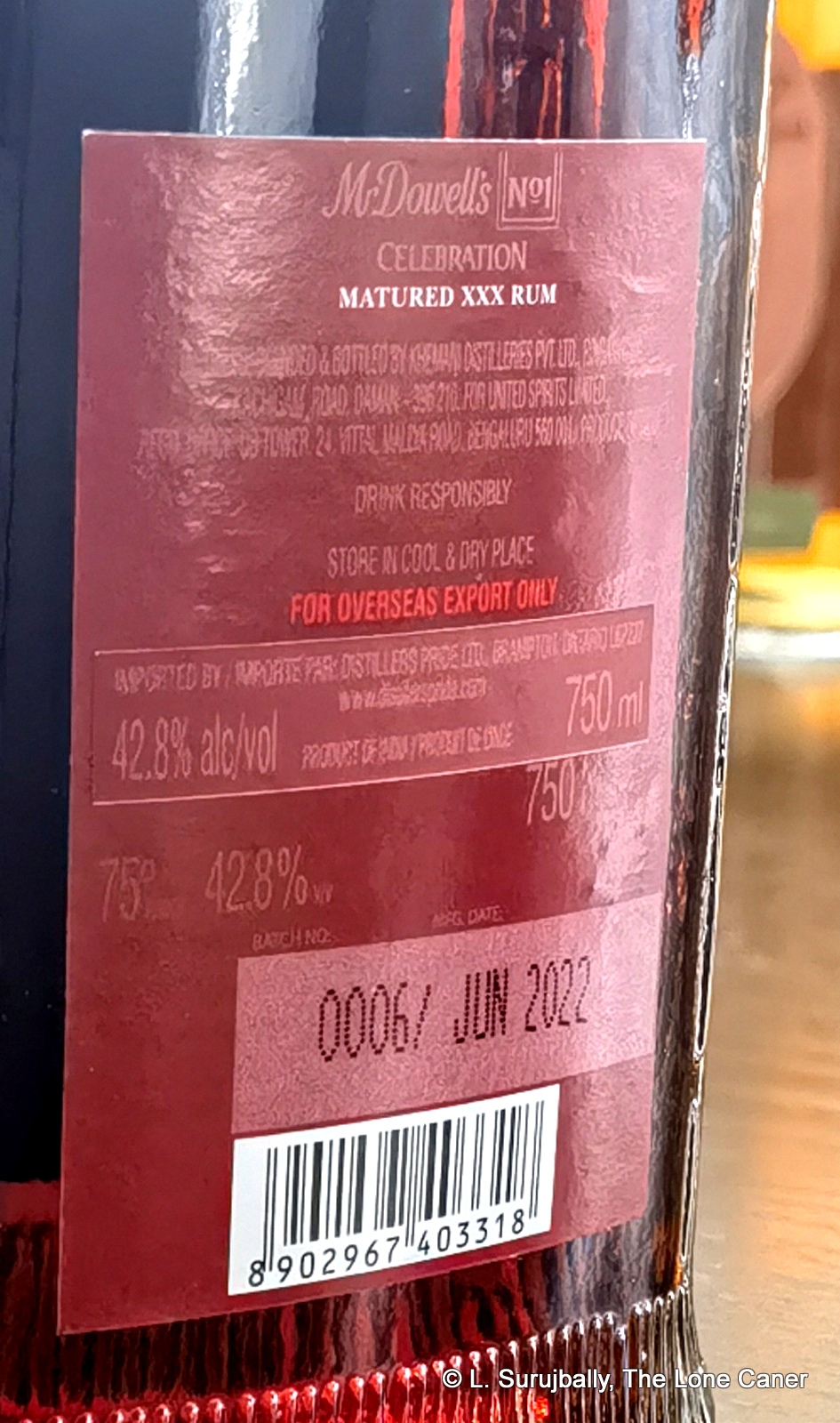 Company Bio
Company Bio 